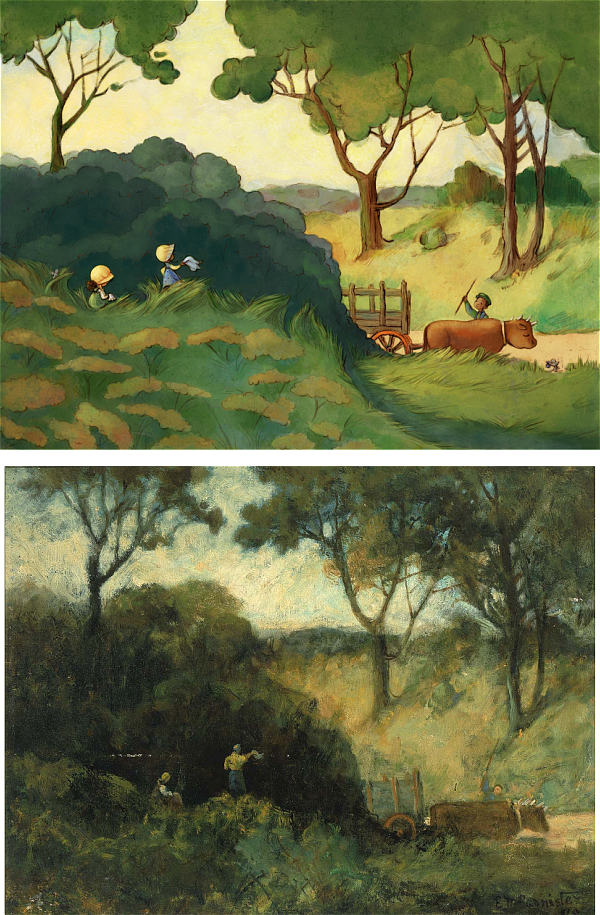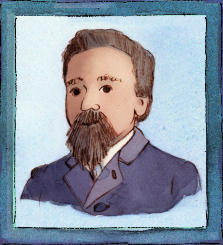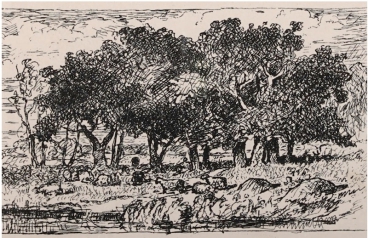

size of the original painting: 14 inches x 19.2 inches
Wouldn’t this be a wonderful place to spend an afternoon? The sweeping trees and wispy grasses are lovely in the setting sun. (Hopefully they aren’t making you sneeze!) Although the people take up a very small amount of space within the landscape, and even though we can’t see their faces, they are the heart of this piece and we can feel their emotion.
But who are they? They obviously know each other, but are they friends? It feels like there’s a deeper connection between them since the girl is standing and waving her handkerchief, while the girl on the left has bowed her head. (Is she sad?)
To Think About:
• Consider your senses while looking around the painting: what might you see, hear, smell, touch, and taste?Meet the Artist:

Edward Mitchell Bannister and his younger brother were orphaned in 1844. (Edward was only 16.) In the late 1840s, he moved to Boston, doing whatever work he could find while also learning how to paint. When he worked as a barber, Edward met Christina (owner of the salon) and they married in 1857.
Although Massachusetts was a free state, people in the United States still had incorrect ideas about Black people. When Edward read an 1867 newspaper article claiming Black people couldn’t paint, he was determined to prove them wrong. Edward practiced his art while Christina and her clients supported him.
Edward wasn’t allowed to participate in art shows because he was Black. But in 1876, he managed to submit a painting into a juried show—and it won first place! But when Edward stepped up to claim his award, the judges saw that he was Black and wouldn’t give it to him. This angered other artists in the competition, and they argued until the judges relented and offered Edward third place. Even though Edward deserves first place, that prize made him the first African American to win an award for a painting—emphatically disproving the 1867 newspaper article.
Fun facts about Bannister:
• Bannister was born in Canada (St. Andrews) but he lived most of his life in the United States. After lots of hard work, he was able to support his family through his art.
• Although he painted many portraits for money, Bannister preferred landscapes.
• After winning 3rd place in the art show, Bannister’s painting went missing. People still don’t know where Under the Oaks is! This sketch is the only clue we have of what it actually looks like:
